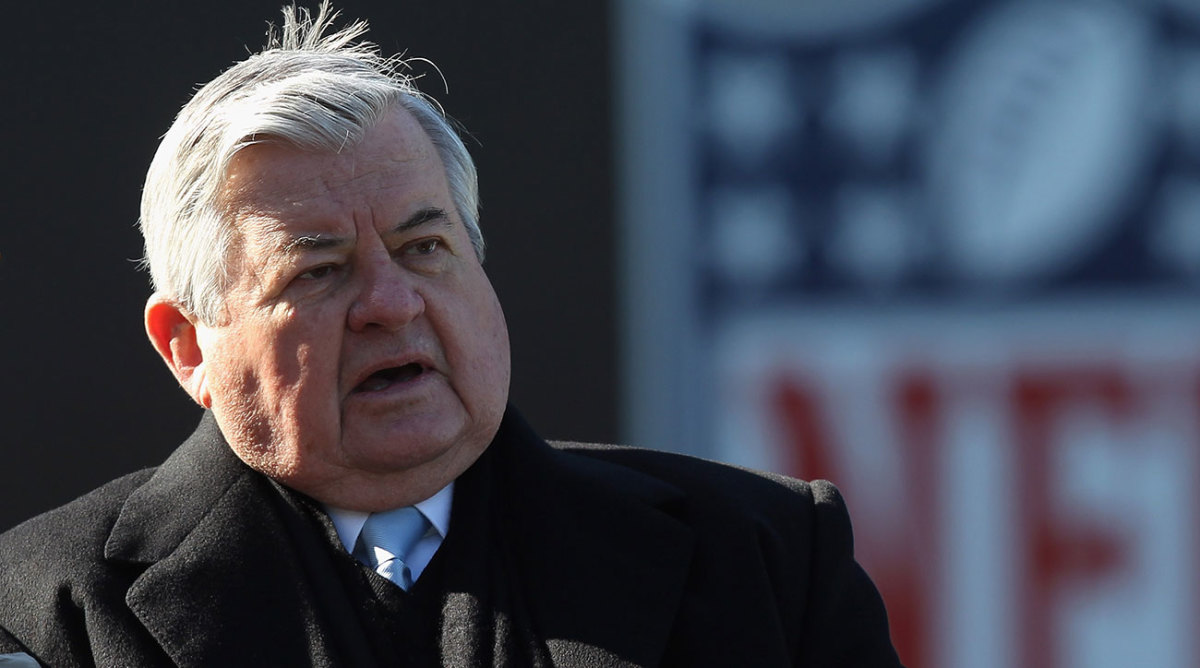Jerry Richardson’s Tarnished Legacy: Under a Cloud, Selling the Team That Made Him an Icon

In July 2016, on the day of his 80th birthday, Jerry Richardson saw his 13-foot statue on a four-foot pedestal unveiled outside Bank of America Stadium. The team’s partners had paid for and commissioned the work by a California sculptor who had done previous work for the Carolina Panthers.
In the statue, Richardson, dressed in a business suit, is standing between two similarly outsized panthers, with a football stretched out. The entire thing weighs 4,500 pounds.
“What we did,” the sculptor told me at the time, “in order to take the emphasis off of Mr. Richardson, we encompassed him with the other panthers so it wouldn’t be uncomfortable for Mr. Richardson to have this out there.”
It was an odd statement then and is an odd statement now. If nothing else, Richardson is a man consumed by his legacy. That legacy was tarnished in the span of a weekend.
After Sports Illustrated’s explosive report Sunday that Richardson engaged in alleged sexual and racial workplace misconduct and made settlements with no fewer than four former employees, the team announced Sunday night that Richardson would begin the process of selling his beloved Panthers once their season concludes.
The statement made no mention of the allegations against Richardson made in the report, and it also ignores the investigation into his behavior that was first initiated clumsily by the team and on Sunday taken over by the NFL. Richardson’s statement is another attempt to memorialize the legacy the 81-year-old wishes to leave even as allegations stare him in the face publicly.

His money has led his name to be on UNC Charlotte’s football stadium and the brand-new basketball arena at Wofford College, his alma mater. There are two statues in his honor (the other at Wofford), which is rather rare for a living man. His heavy involvement in the 2011 collective bargaining agreement was first about making money and second about his legacy. His team’s success—and his long friendship and partnership with former Bank of America CEO Hugh McColl—has helped shape a New South city. His recent refusals to attend owners’ meetings signal his unwillingness to bend to the league or appear as a weakened owner following his being on the wrong side of a Los Angeles deal years ago. His public image played into why he didn’t want players protesting during the national anthem in his stadium. His legacy is why he stayed in his seat the entire game Sunday.
His obsession with his stature went beyond even what was written in SI’s report. When the Panthers introduced Dave Gettleman as their general manager in 2013, Gettleman began retelling a story from his days with the New York Giants. He mentioned a “Jerry” by first name, and to those in attendance it was obvious the reference was to then-Giants GM Jerry Reese. Richardson stopped Gettleman to have him clarify he was talking about Reese and not “Mr. Richardson.”
And so now the Panthers will be up for sale in a city that has no major college team and couldn’t care less about its NBA team. Residents will worry that Charlotte could lose the Panthers under a new owner, despite how unlikely that is. The NFL would never move a team that has sold out every home game since 2002, has made major stadium upgrades in recent years and has a city council deathly afraid of having an unoccupied stadium sitting under its proud skyline.
Buyers with nearly $2 billion to spend will come for this sale. Puff Daddy has tweeted his interest. Michael Jordan, already the owner of one Charlotte team, could conceivably put together a group. Locals like the Levine family (huge Charlotte philanthropists who made their money in the Family Dollar empire) or Bruton and Marcus Smith (the father-son duo who own and operate Speedway Motorsports) are atop the short list of those in the area with deep enough pockets.
It appears there were two options here for Richardson. He could keep the team and fight these claims. In the process of that, though, one possibility is that more allegations could come out and the saga get uglier. The other option was to sell the team—that would have been done within two years of his death anyway—which could potentially stem an investigation and salvage a reputation that took five decades to build.
So in that case for Richardson, maybe the decision was obvious.
